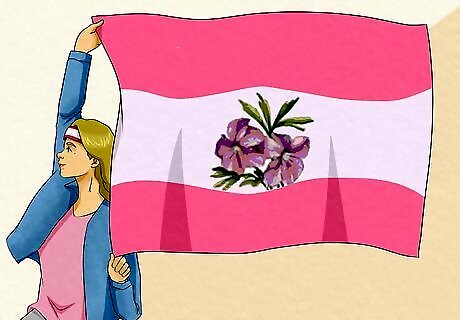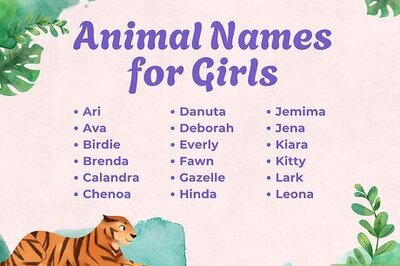
views
- A sapphic relationship refers to a relationship between 2 women, or women-aligned individuals, of any sexual orientation.
- The term “sapphic” is more inclusive than “lesbian” because it includes all sexual orientations. Lesbians refer to women who are only attracted to other women.
- “Sapphic” derives from the Greek poet Sappho, who wrote poems about her love for women. Today, the “sapphic aesthetic” refers to any art form that emulates her work.
What does it mean to be “sapphic?”

It refers to a woman of any sexual orientation who’s attracted to women. Similar to “women loving women,” sapphic is an umbrella term that includes all sexual orientations, including lesbian, bisexual, pansexual, trans femmes, mascs, non-binary, queer, and cis women. It can be used as an identity or a way to describe a relationship, and it’s especially helpful for those who haven’t figured out their sexual orientation yet, but know they like women or women-aligned individuals. Being sapphic can mean different things, depending on who you ask, but many people believe it's become less about the gender you’re attracted to and more about being in a community of people who understand your experience. At its core, being sapphic is all about embracing queer love, no matter your gender or sexual orientation.
What’s the difference between being “sapphic” and “lesbian?”

“Sapphic” is a more inclusive term than “lesbian.” Although “sapphic” and “lesbian” have been used interchangeably, they do not have the same meaning. Lesbians refer to women who are only attracted to other women, which exclude people who identify as bisexual, pansexual, omnisexual, and polysexual. Sapphic, on the other hand, includes all sexual orientations, so a lesbian could identify as sapphic, but not all sapphics identify as lesbian. Both terms include non-binary people, so those who identify as a woman can describe themselves as lesbian, sapphic, or both!
Origin & Spread

The term “sapphic” originates from the Archaic Greek poet Sappho. She was a popular poet who lived on the Isle of Lesbos around 600 B.C., and her work often described love and desire for women. Her poems were written in an original rhythmic pattern, a 4-line schema now known as sapphic verse, and when they were discovered in the late 1800s, they became synonymous with femme love. Because of Sappho, the island of Lesbos gave its name to the terms “sapphic” and “lesbian,” which writers often referred to as sapphic love. Today, “sapphic” also refers to an aesthetic that captures the spirit of Sappho’s poetry. It emphasizes sensuality, intimacy, and femininity, and can be found in many art forms like music, film, fashion, and literature.

Sapphic became a popular term during the mid to late 20th century. It experienced a resurgence during the feminist and LGTBQ+ movements of the 20th century, which included efforts to gain acceptance for same-sex relationships. “Sapphic” became synonymous with the word “lesbian,” and both terms were used to describe a potential romantic relationship between 2 women. During this time, being sapphic was a source of pride, unity, and empowerment for women who loved women.

Today, “sapphic” has evolved to be more accepting and inclusive. In the 21st century, being sapphic has expanded beyond women attracted to other women. Online communities like TikTok have popularized the term, and modern sapphics include those who identify as trans, masc, queer, non-binary, and any other identity that falls under the spectrum of same-sex attractions. The term acknowledges the unique experiences and relationships of female-identifying individuals as they navigate through society. Currently, there are over 4 billion views for the sapphic hashtag (#sapphic) on TikTok. The most popular videos involve memes about what it’s like to have attractive sapphic friends and date as a sapphic. Other popular TikTok hashtags include #sapphicedit, #sapphicmovie, and #sapphicreads, where users share their favorite movie scenes and books about sapphic love.
Sapphic Flag

The sapphic flag has 2 pink stripes, with a pair of violets in the center. In 2015, Tumblr user @lesbeux-moved designed the original sapphic flag. It features 2 pink stripes across the top and bottom, symbolizing love, and a pair of violets in between the stripes. According to the user, violets were traditionally given to women to symbolize their sapphic desire. In 2017, Tumblr user @pride-color-scheme tweaked the original design by changing the violet in the center. Instead of a pair of realistic-looking violets, the updated sapphic flag has a single, simplified violet.

















Comments
0 comment